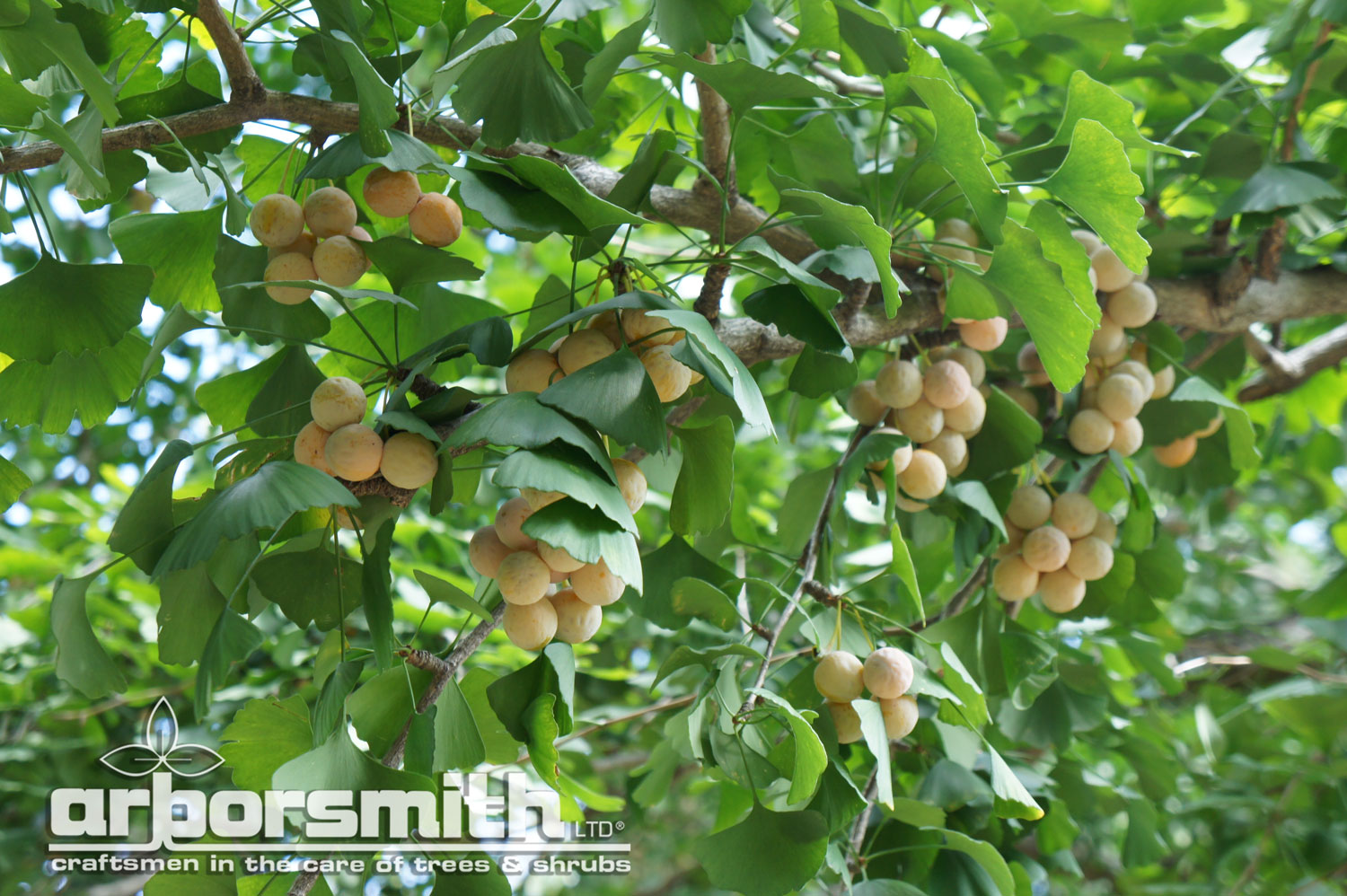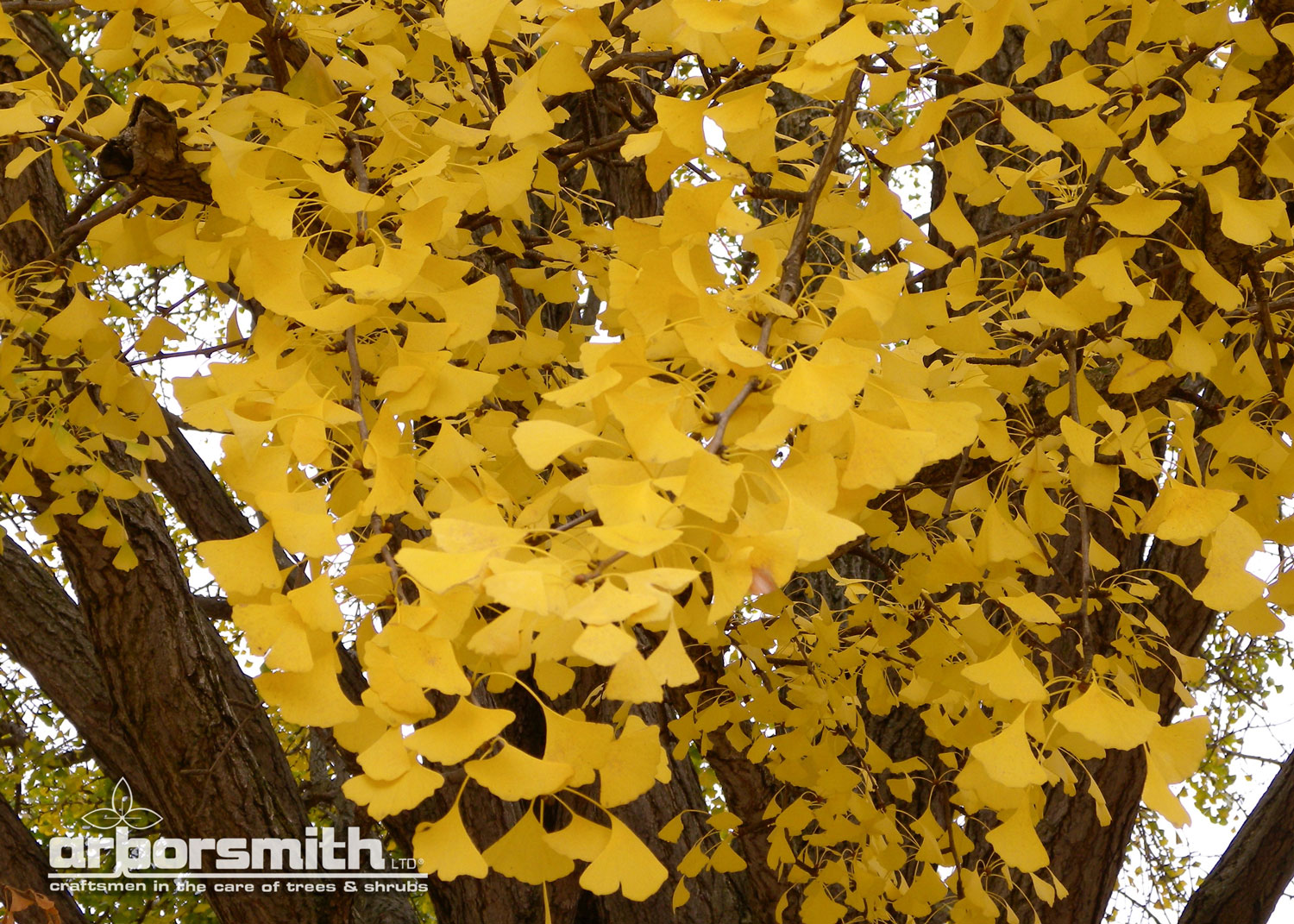Ginkgo biloba
/August/September 2017 Tree of the Month
photos and text by: Lesley Bruce Smith
A squirrels’ eye view of a stately Ginkgo biloba
The unusual leaves of the Ginkgo tree are both lovely and familiar due to it’s many unique traits. It’s leaves are unlike those of any other existing tree, although fossil records are plentiful of this ancient tree, which even predates the conifers, of which they share many important characteristics. The Ginkgo biloba is also known as the Maidenhair Tree because its leaves are similar in shape to the fronds of the maidenhair fern.
This is a good moment to discuss the gift of binomial nomenclature that we received from the Swedish botanist, Carl Linnaeus, whose larger than life statue stands near the visitor center at the Chicago Botanic Garden. Binomial nomenclature is just the fancy way of saying the system of scientific naming of plants and animals that gives each species a Latinized name with two parts (“bi“= two), the first part indicates the genus and the second is the specific name or species. It is a lot like our family or tribe name=last name and then our first name which identifies us as individuals. In plant naming we always capitalize the the first, genus or family name and then the species or individual name is lower case with specific cultivars being indicated by an x before it. I digress a bit here but it is of import because the family Ginkgo or Ginkgophyta has only one living species, the Ginkgo biloba, all others being extinct. It is found, with many of its now extinct relatives in the fossil records all over the world dating back 270 million years!
Ginkgo fruit on a female tree, ‘silver apricots”
Autumn color on a Ginkgo tree in Wilmette, IL
The tree we know today is native to China and was preserved in gardens and palaces and from there was taken to Japan and Korea, probably by Buddhist monks. The name Ginkgo comes from the Japanese ginkyo, meaning “silver apricot”, which refers to the female fruit shown in the photo. Although beautiful, the fruit smells decidedly like vomit and so the male of the species is what is most often planted in our landscapes. They are fairly tolerant of differing soil conditions, once established, but love full sun to thrive. They have proven to be quite hardy and are disease and insect resistant, and in fact one Ginkgo tree survived the nuclear bombing of Hiroshima, even though it was only a kilometer away from the epicenter of the explosion and all around it was destroyed. It survives to this day and has a temple built around it as a testimony to peace.
The “bilobular” Ginkgo tree in Winnetka, IL
The Ginkgo is prized not only for its unusual and hardy character as an ornamental tree but has been used in Asian cultures for medicinal purposes for thousands of years. The modern extracts are taken from the dried green leaves and are highly concentrated. Scientists have found more than 40 components in the Ginkgo and the two they believe are the most medicinal are the flavonoids and terpenoids. Theterpenoids improve blood flow through vessel dilation and reducing the stickiness of blood platelets. The flavonoids, similar to all plant based anti-oxidants, protect nerves, the heart muscle, blood vessels and retina from damage. It is in these actions that they are believed to aid in memory and improve blood flow preventing blood clots.
Another scintillating example of how trees are not only healing, but easy on the eyes and good for them!
Anthocyanins • Backyard Wisdom






